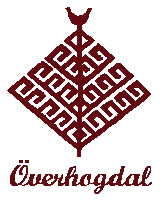Hovedal letter
1919 Letter from Olof Hovedal to his mother
Olof Hovedal was a cousin of Gölin Ringwall. His father Mårten Matsson was one of the siblings from the Skugg story. Mårten married Brita Olsdotter in Flor. He met her while working on the farm of his brother in law Olof Olsson, who married his sister Ingrid. Mårten and Brita lived in Överhogdal for the first eight years of their marriage and Mårten worked as a blacksmith. After Ingrid and Olof Sjules emigrated, Mårten moved the family to his wife’s family farm in Flor. Olof was born in 1869 and was the only surviving son.
Olof married Märta Berglund in 1893 who was from Åsarna. The had four sons, Mårten b. 1894, Johannes b. 1896, Matteus b. 1898 and Georg b. 1904. They were a devout family but did not baptize their children in the Lutheran church or the Mission church. They moved to Canada in December 1904 but returned to Ytterhogdal exactly two years later. Olof was noted to be a mechanic. His older sons returned to the US between 1916 and 1918, however two returned. Matteus came back, married a Norwegian and lived in the Trondheim area. Martin returned to his family. Johannes settled in the little town of Hoogdal, Washington. As you can tell from it’s name, it was settled by families from Hogdal, mostly Ytterhogdal! It is near Sedro Wooley, Washington.
In 1919, Olof, Martin and young George (15 yr) set off once again for the USA. They did not return this time. Before they left, the family lived in Åsarne for a year, where Märta was from. Märta did not go with them and died in Berg in 1939. Olof died in Washington in 1941. The three American sons never married. From a descendant of Matteus, Olof was a controlling person and hard to live with, but, he wrote an interesting letter! Many thanks to Gösta Sjöblom for sharing this letter with me.

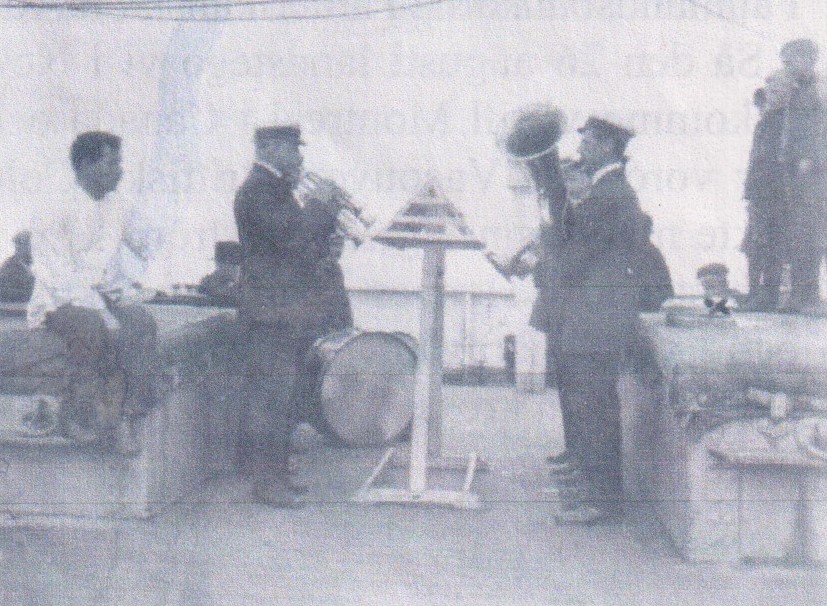
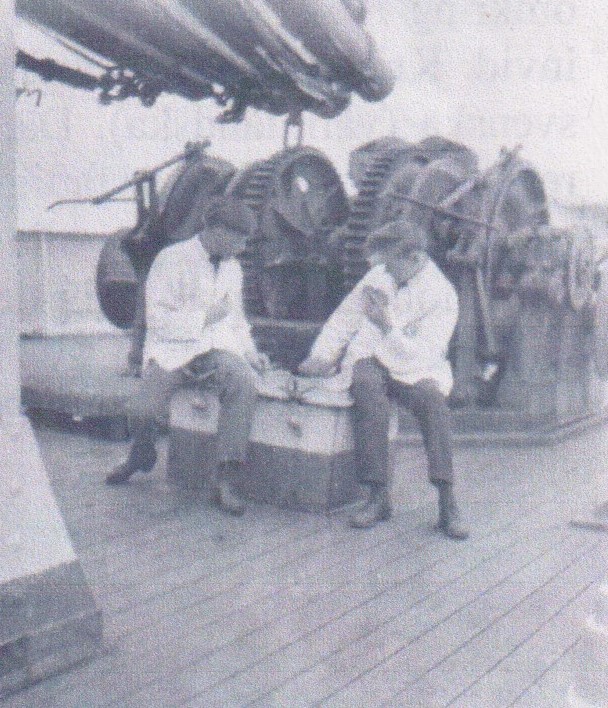
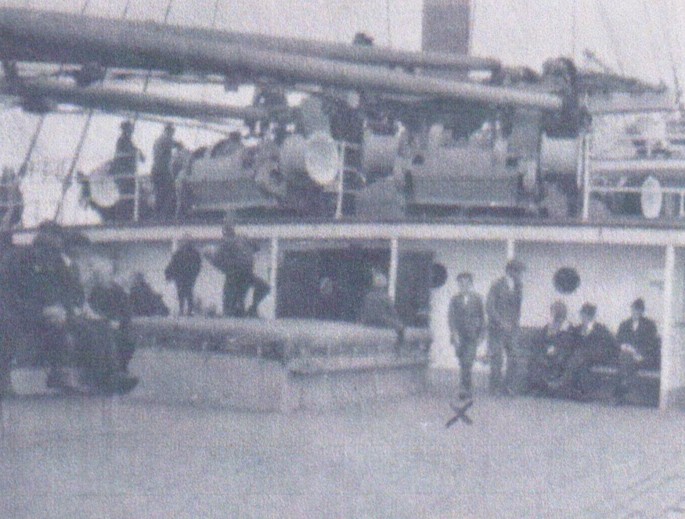
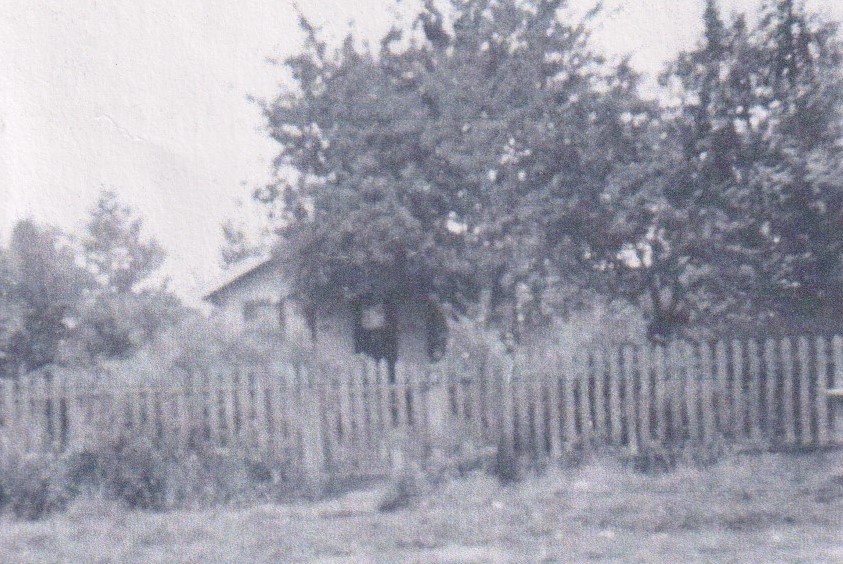
30 October 1919
Hoogdal, Washington, USA
Dear mother Brita Hovedal,
In this letter I want to show and tell you something about Martin, Georg and my trip in pictures, including where Johannes lives. Georg and I stayed only one night at Hotel City in Kristiania (Oslo), because the rooms were full of bedbugs to such an incredible degree that I have never before seen the likes of. I wandered around on the second day and before evening got accommodation in villa Ringstad up on Ekeberg near Kristiana. The landord is Norwegian but the wife is Swedish (from Varmland). Here everything was nice and clean, even though the family is poor. The man is a porter. Once settled, we had to get our papers in order, get our visas, exchange money, get rid of things we didn’t need, see the doctor, get vaccinated etc. I also had to help fellow travellers get things organized, who were too impossibly stupid to figure it out themselves. Then we had our goods shipped down and checked in.
The 16th of August we went onboard North American Line’s steamer “Stavangerfjord”…..On the wharf stood friends and loved ones, among them Matteus (son) who we wish was with us.
The steamer’s orchestra played some fanfares, the ship slipped its mooring and moved out from the wharf, and so the giant glided out of the harbour and down the fjord. First well known faces, then crowds and then the city disappeared from our sight. The course was out the fjord and along the coast until out of the archipelago. The next day we approached Bergen and went into the archipelago again. The pilot boat left us now as we headed out to sea. Just as we set out we passed two large drifting mines, probably German, a short distance away.
The long trip in all its monotony had begun. Our course was North of Scotland and the Shetland Islands. However, the shipping company had taken care for the comfort and entertainment of its passengers in the Scandinavian way. Each day, yes, for days on end there were concerts by the ship’s choir both in first and second class, in the 3rd class dance hall, and on the 3rd class aft deck. It goes without saying that those keen on dancing took the opportunity to spin around.
The service on board in 3rd class was at least as good as on the English boats’ first class and the waiters at least as polite. The food was excellent, cleanly prepared and served in abundance at tables newly set for every meal. We had real coffee, not surrogate, and everything was served to us by an attentive waiter.
The passengers provided for themselves for the religious side of life. Some of the travellers were priests and preachers from various Protestant denominations and sects, and Stavangerfjord has never housed so many religious people in its railings. Every evening there were meetings in the 3rd class dining hall.
Even the crewmen in their own way “kill time” in their spare moments. The picture shows a couple of young people who have sat down on one of the ship’s material chests next to the crane on the fore deck, eagerly studying the mysteries of card art. Bad individuals abounded, most of them ardent card players. Two thirds of those travelling were those who previously were in America, had travelled back to the old country with the intention of staying home, but found the economy financially nonviable and were forced to return to America. The travellers were a mixture of old and young, elders and children of both sexes, priests, preachers, farmers, merchants, and old sourdoughs (gold diggers). (There where) old hustlers and pranksters as well but luckily still pretty honest people. The 3rd class passengers numbered about half of what the boat could carry, but the 1st and 2nd classes were completely full.
The picture here shows how social life took shape on 3rd class aft deck. Georg Dalen Hovedal can be seen marked with an x. Georg still mourns and misses the steamer and wishes he was on board. Among the passengers there was a Finnish priest. He had been commissioned as a private soldier amongst the Finnish white troops. When he was describing the Red’s march into Finland his eyes widened with horror and the hair stood on end on his head, and though a very strong and brave man, he trembled in every fibre as he told of the misdeeds of the Russians.
So the journey continued day by day, sometimes in clear weather, sometimes in impenetrable thick fog, during which the steamer still rushed forward, measuring the distance travelled by means of the new Swedish log apparatus, which was built into the ship’s hull. Day by day, counting ten days all together, we saw only sky and water.
On the 26h of August we embarked in New York. On the 27th we arrived in Montreal in Canada and the 3rd September we were in Vancouver, BC and I looked up my cousin Sigrid Hagstrom. She is a widow, childless and stone deaf. Her husband was actually murdered, robbed and laid on the railroad track, so that after death he was crushed by a train inside the city.
There was a delay next as Johannes had requested a new American passport (he was living in the States) however on September 9 we received a letter that he was refused entry into Canada. Therefore the same day we left Vancouver (by train?) and in the evening we were in Sedro Wooley, Washington. The next day John met us in his car. Jonson’s wife and son were also in town, so I went with them and Martin and Georg with John, and we arrived in Hoogdal. It’s about 2 Swedish miles (14 English) from a place called Avon where H Pearson and family live. (Påls Halvar and Erik’s Ingrid) The picture shows the farm they rent. Both Ingrid and Halvar have become fatter (Ingrid is not well) but their daughter Ida Katarina is hopelessly skinny but happy.
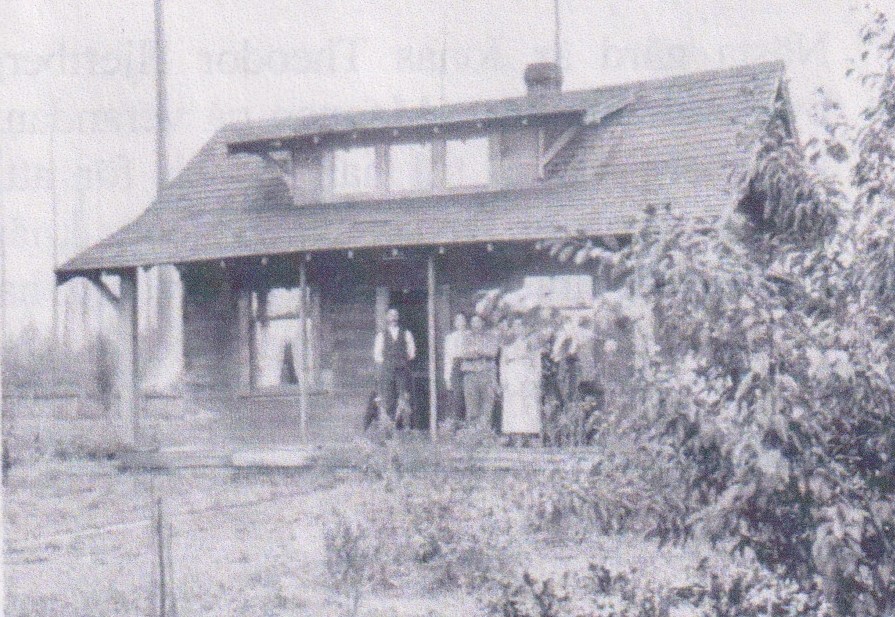
Here you see J Jonssons farm (Erik’s Jonas), the most easterly. On the veranda you see Jonsson’s brother in law J Sandin and John Hendriksson, Jonsson’s son and daughter, Signe Sjodin and Ebba Westerberg.
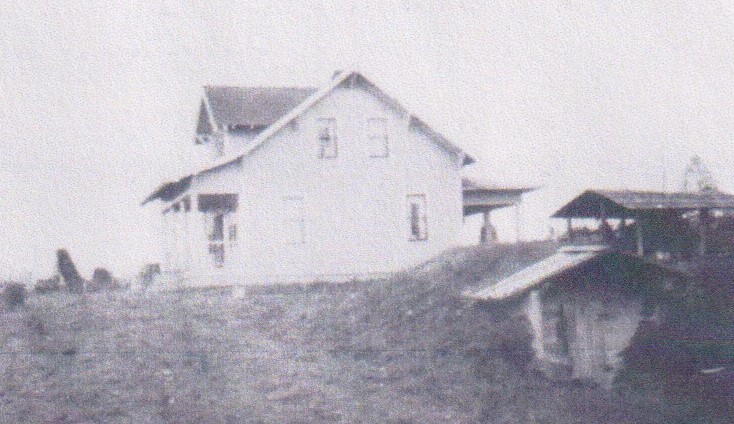
Going east through the town we come to John Hendricksson’s farm, inhabited by the mad Hendrickson himself and his wife and children. The family lives a veritable crazy life, where the old man goes about flailing his arms, jumping and screaming, grimacing and howling, dancing and bragging and sometimes scaring his wife and children with a knife or stick.
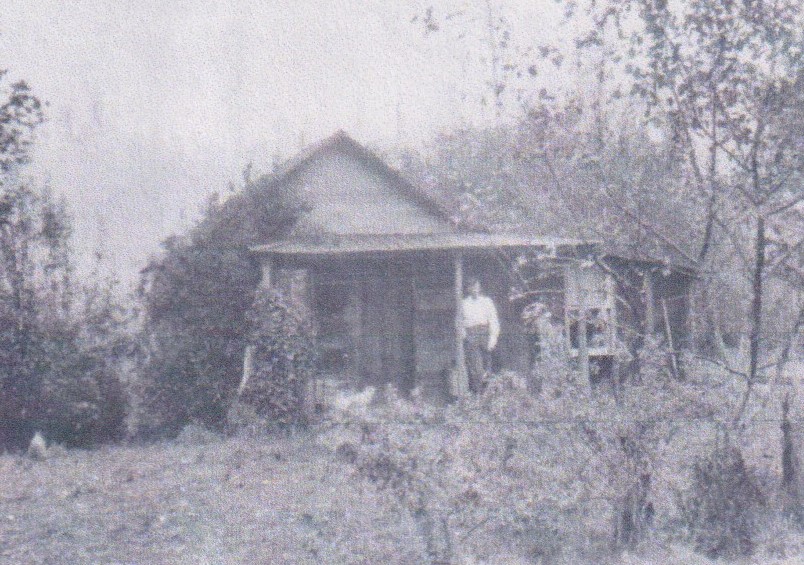
The next picture shows Per Ostlunds farm. On the veranda stands Per himself. On the veranda in front of the door you see their dog Snowball, a master at killing chickens and rabbits.
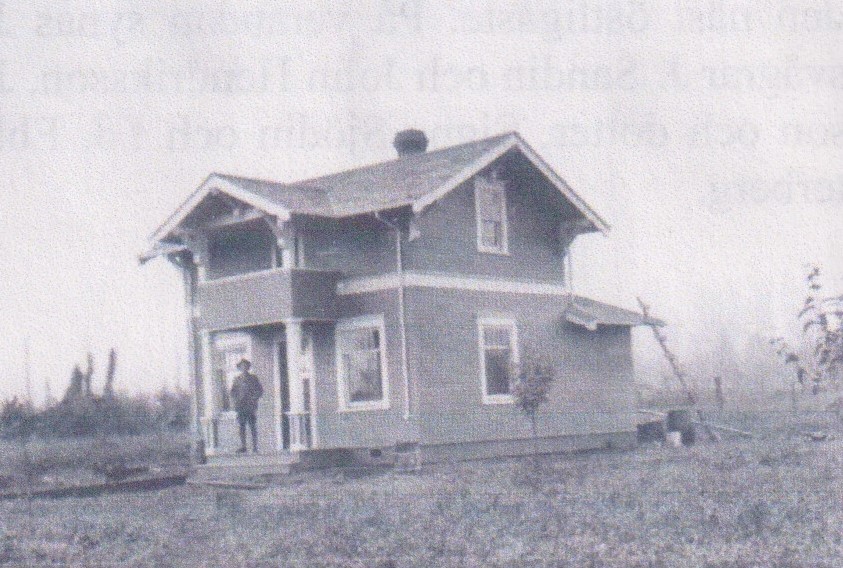
The next farm is Jonas Theodor Hjertbergs, newly built this fall. The man on the veranda is me. Hjertberg was not nearby and to make the picture more alive I let Georg take it, while I stood in position. Before, Hjertberg had only a shanty at the edge of the forest. This shanty is where I now live. Hjertberg has done well for himself.
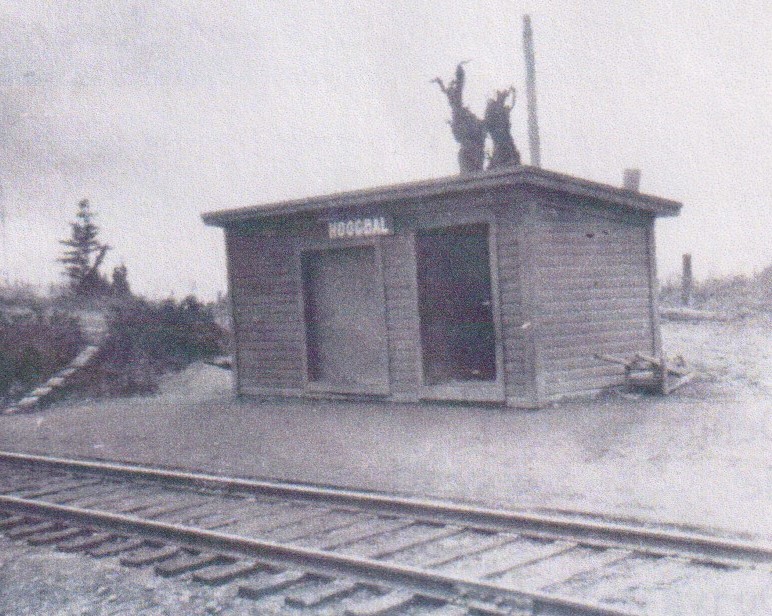
This is the Hoogdal train station, little and modest like the whole town. The train going through Hoogdal is the Northern Pacific Railway, which goes between Vancouver and Seattle.
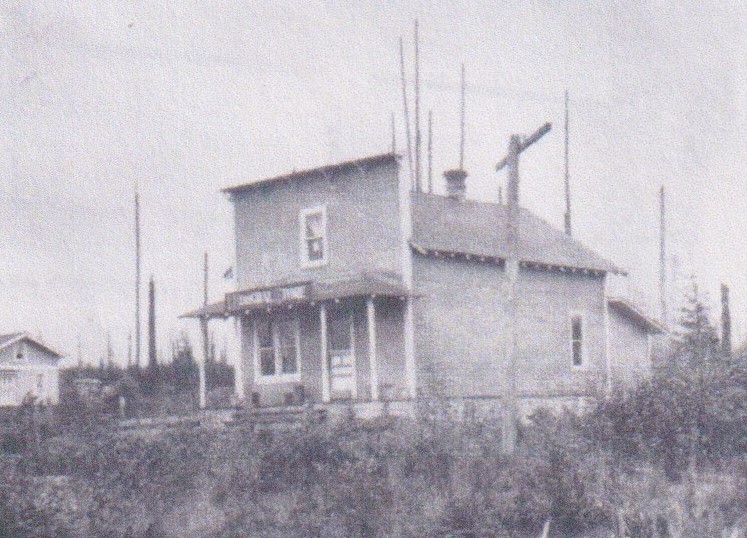
Near to the station is the Hoogdal store, which is owned by southern Swede O Okerstrom.
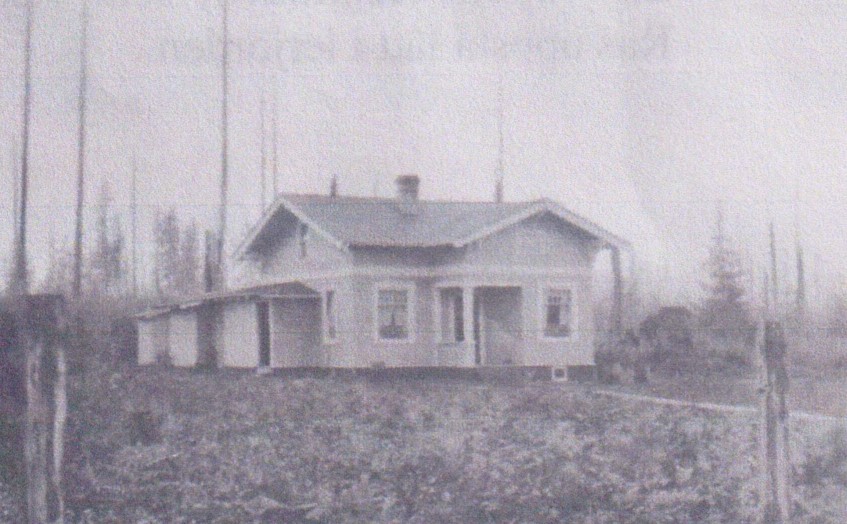
The prettiest, most stylish and tastefully decorated house in all of Hoogdal is Sigrid Kihlbergs. It is also the most practically decorated. The house’s sitting room is pretty and inviting with its angles, and built in cabinets in the corners.
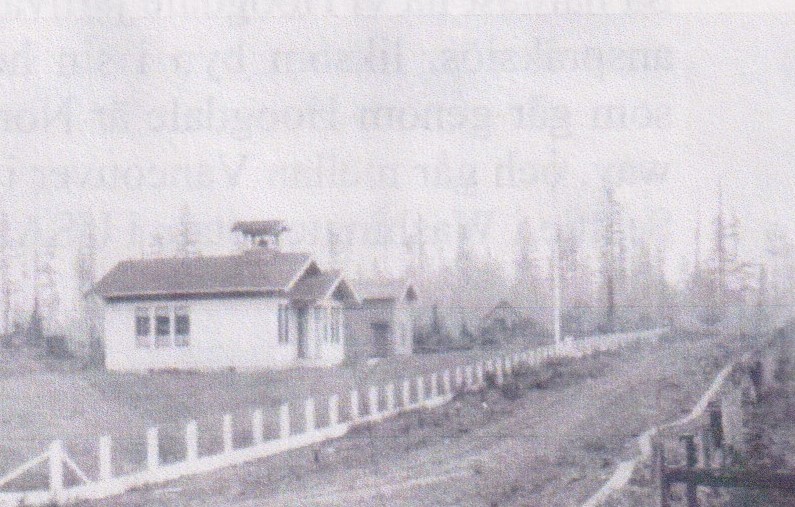
This picture shows the school house.

Then we reach P O Ostlunds farm shown in this picture. PO Ostlund (Tras Pelle) is seen before the stairs, newly come from an unsuccessful hunt (windfalls and rice make hunting impossible). I stayed in an upstairs room after I moved from Jonssons and before I moved to Hjertbergs shanty. Jonsson and Ostlund were the first farmers in Hoogdal and gave the place its name.
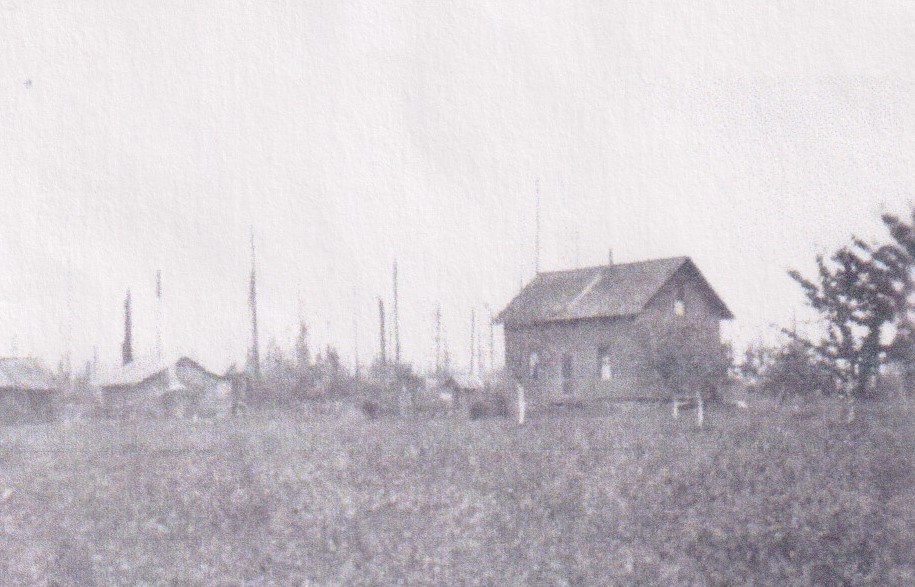
The last and most easterly farm in Hoogdal is John Gripps farm, which you can see in this picture. Curiously, John’s place is extremely simple, although he is the village draftsman, architect, builder and painter. The pictures show what has been accomplished in a few years in the wilderness.
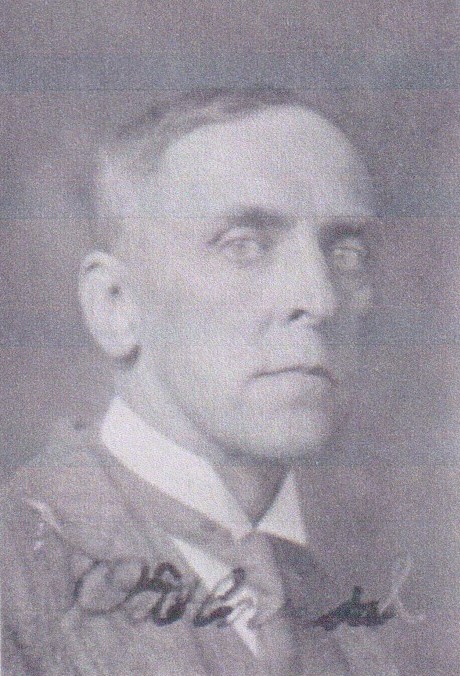
The next picture is to show you how I looked, when I arrived in this land.
When I next have something to write, and about what, I don’t know. I have tried to write here so that my elderly mother can understand the words, Your affectionate son, O Hovedal.
